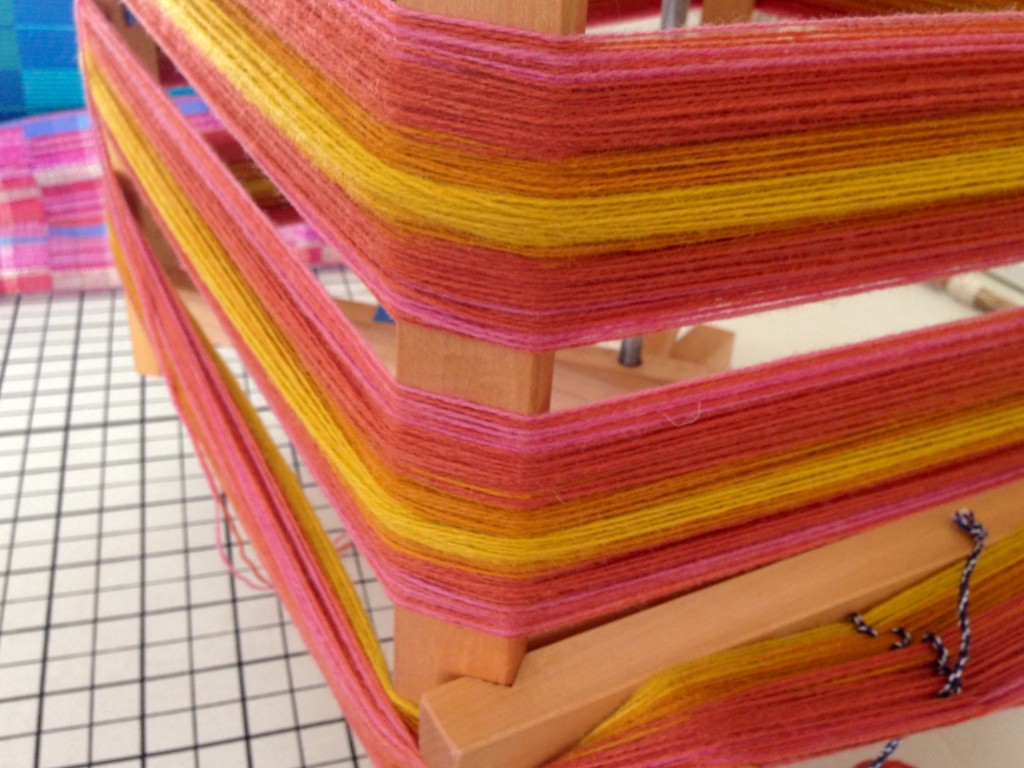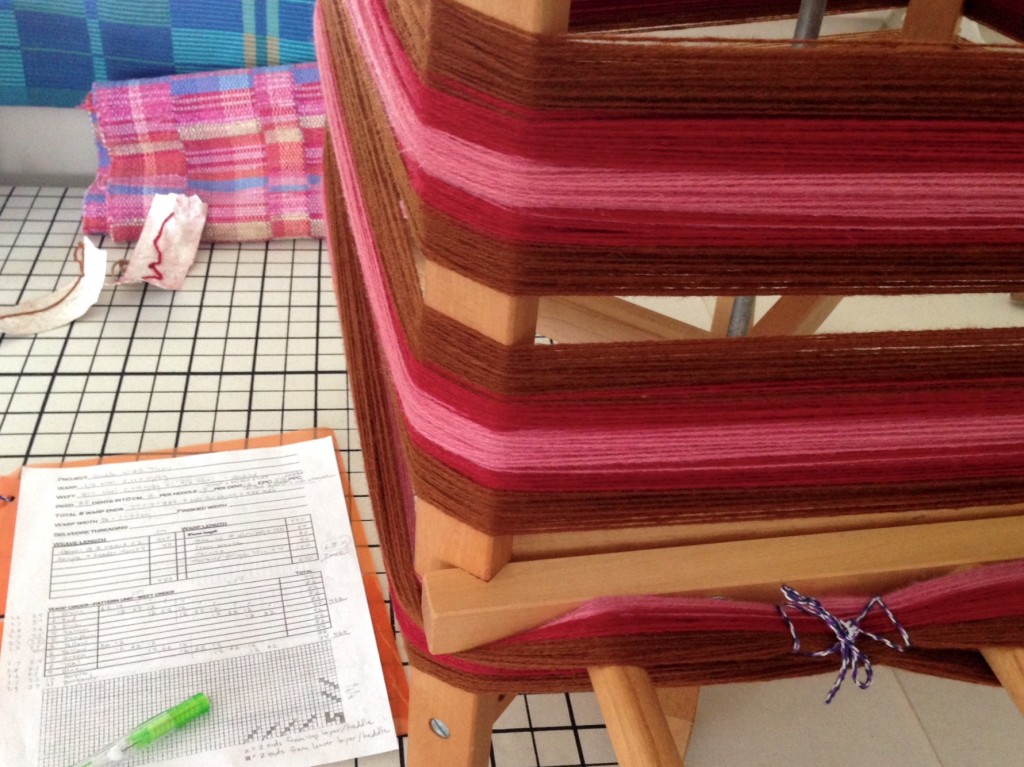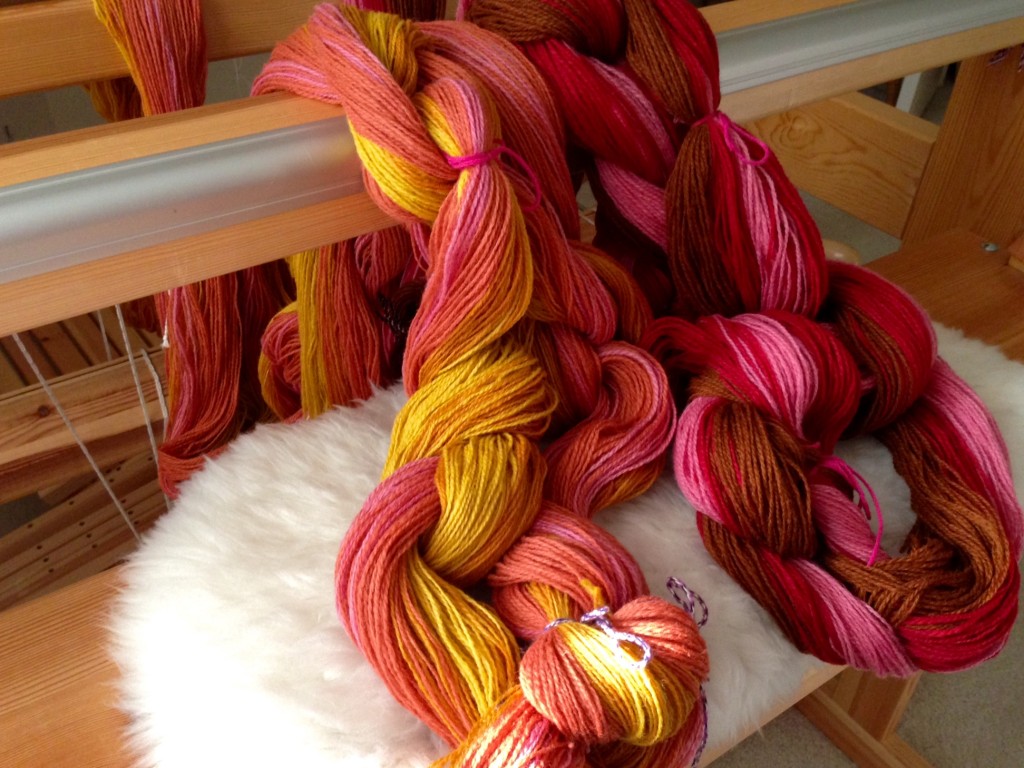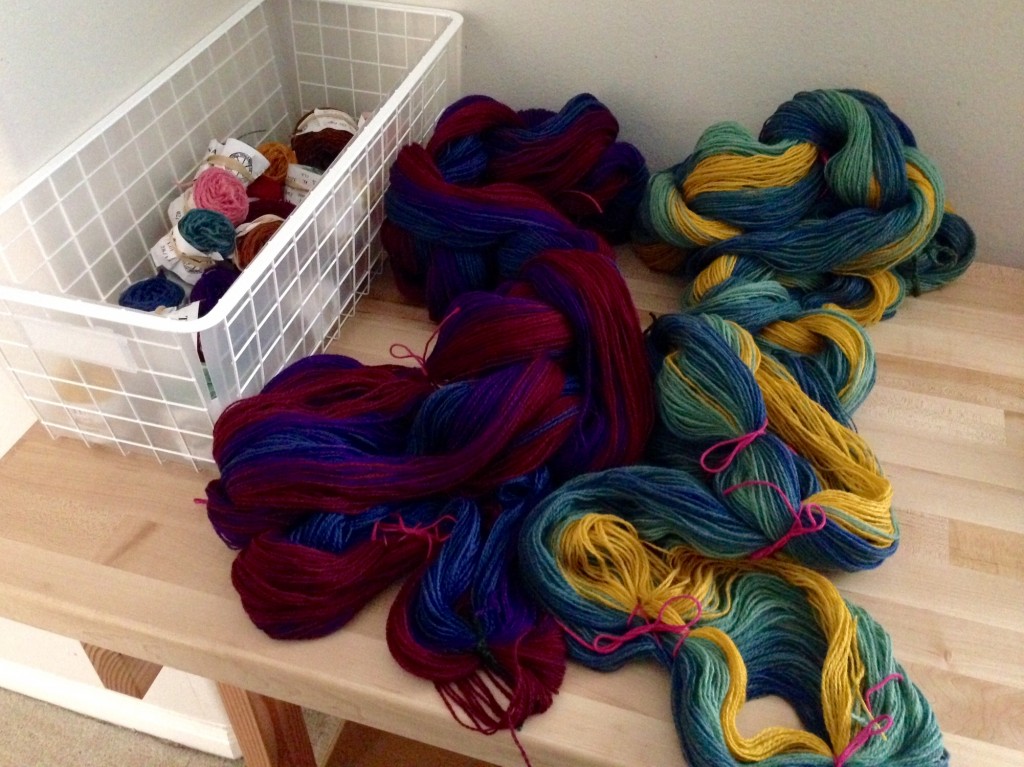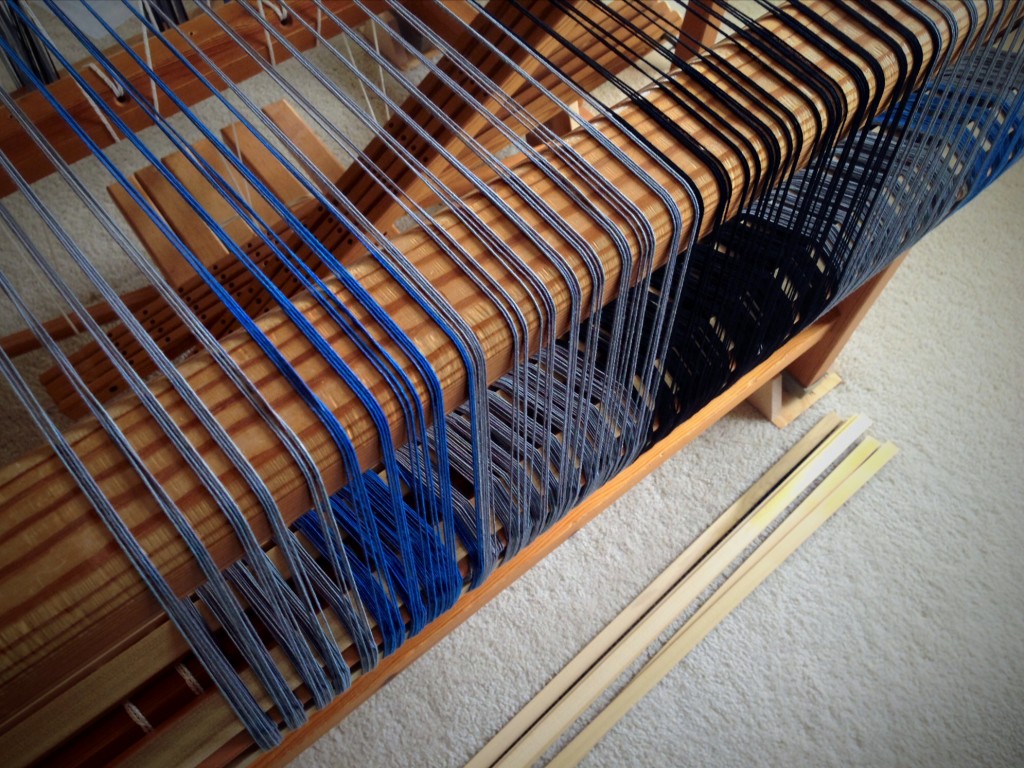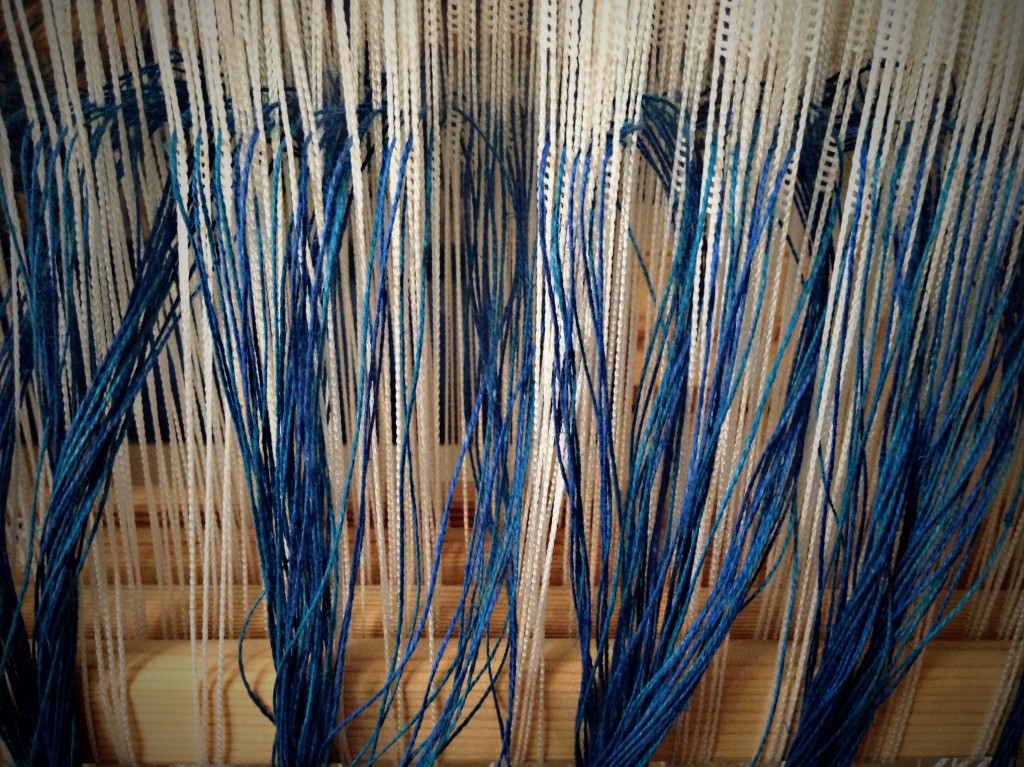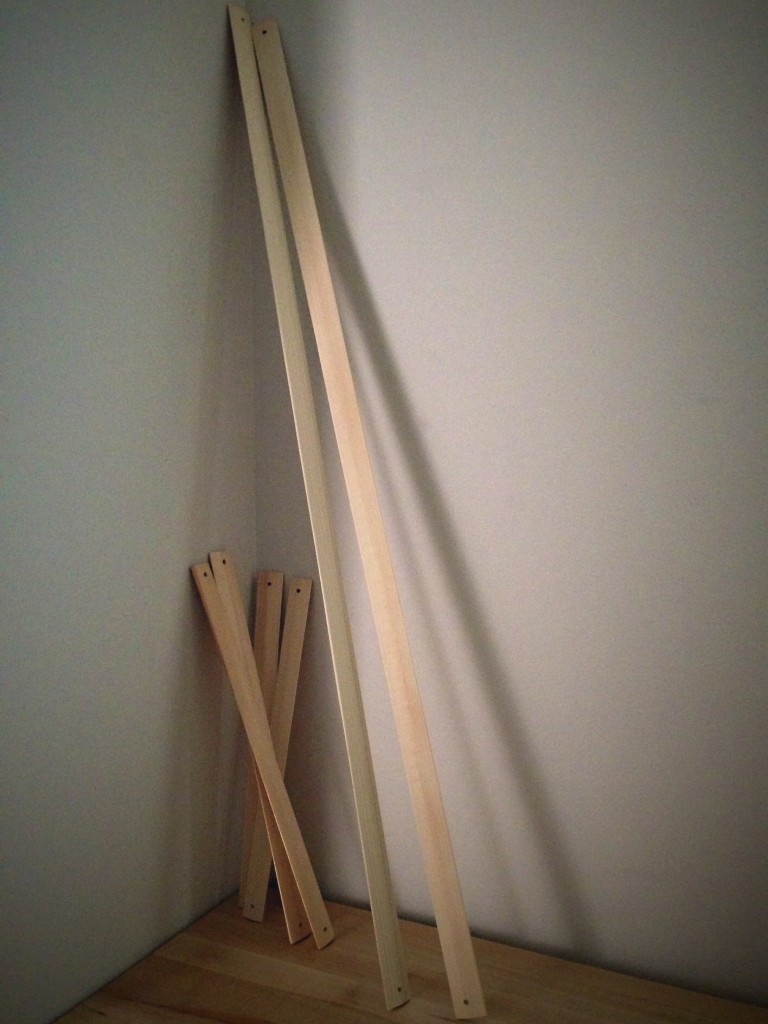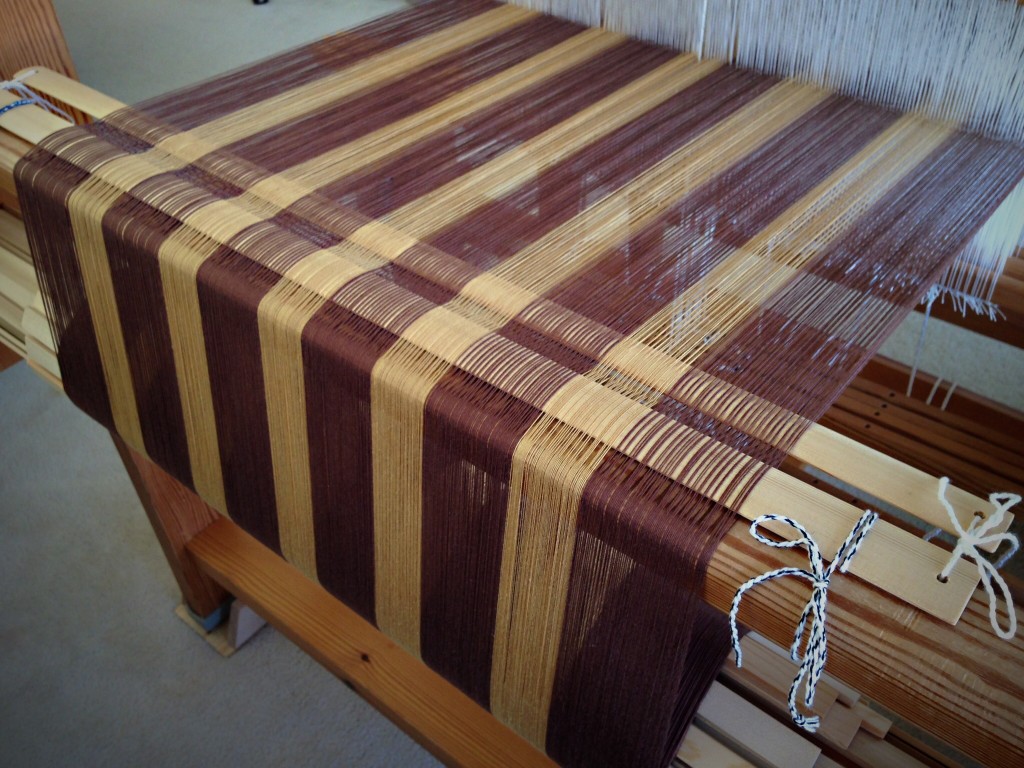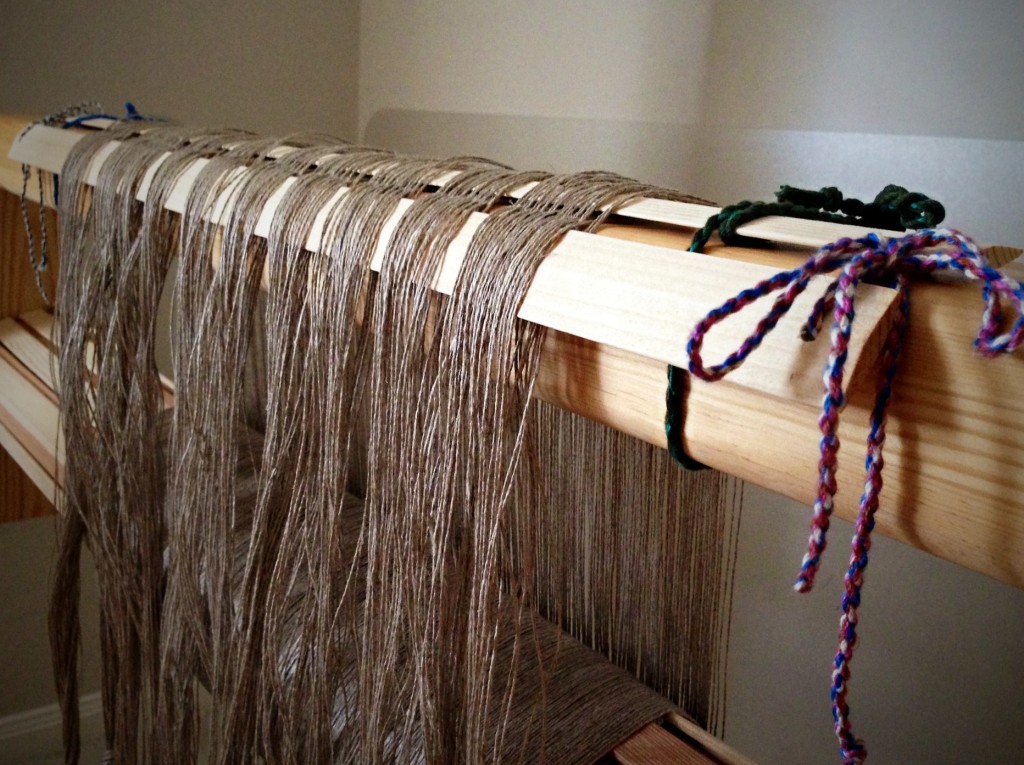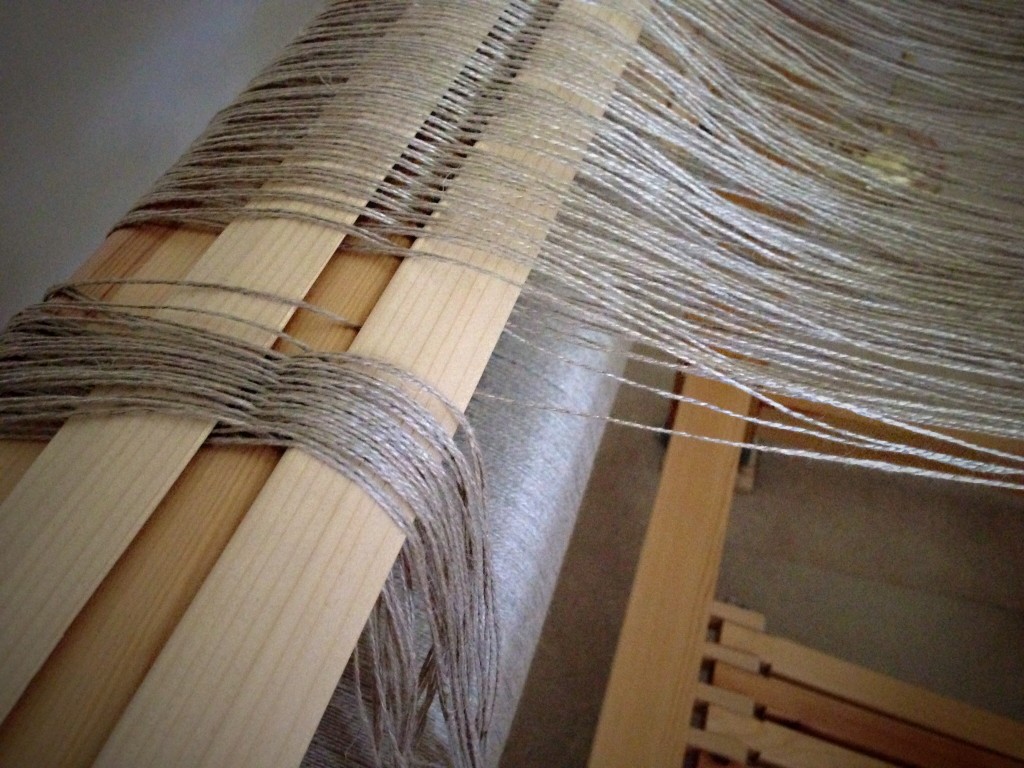This is my first double width attempt, and it makes me nervous. Dressing the loom feels intimidating when you are trying something new. Each layer has its own warp chains and its own set of lease sticks. And eleven colors–will they end up in the correct order? My uncertainty makes me feel like a beginner again.
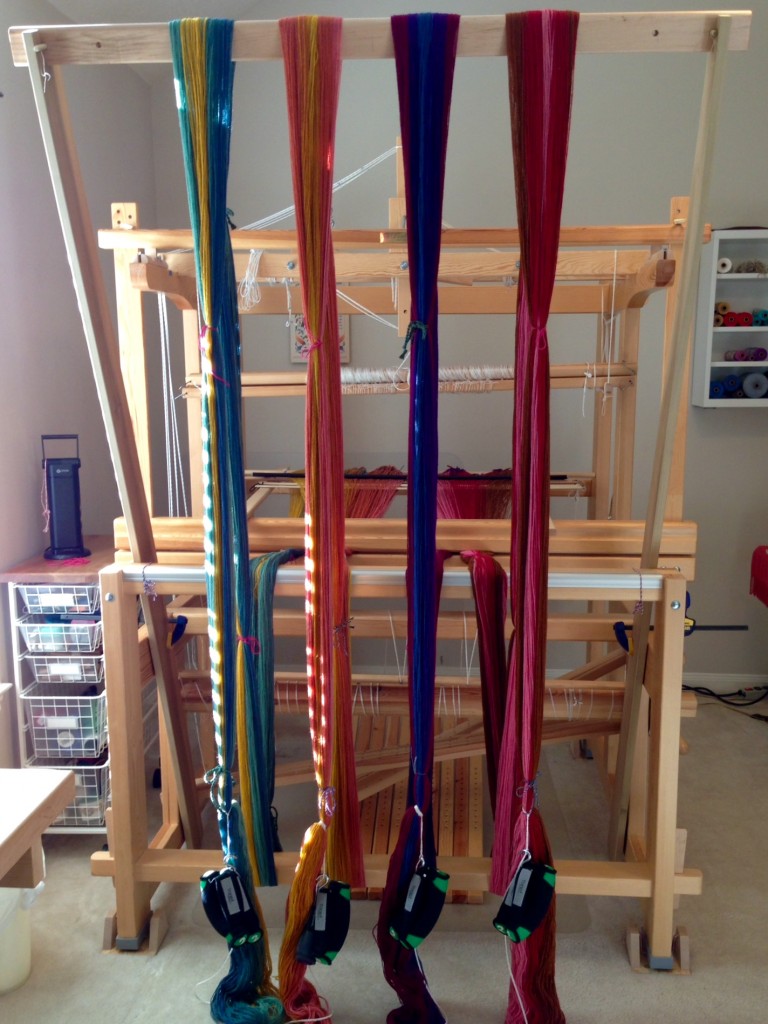
Stepping through uncertainty takes bravery, and a bit of “Oh well, it is what it is.” Even ordinary weaving is filled with uncertainty. You don’t know if you succeeded in dressing the loom properly until you start weaving. And you don’t totally see how your weaving looks until it comes off the loom. Even then, the fabric has more to reveal when it is wet finished. Weaving is not for cowards.
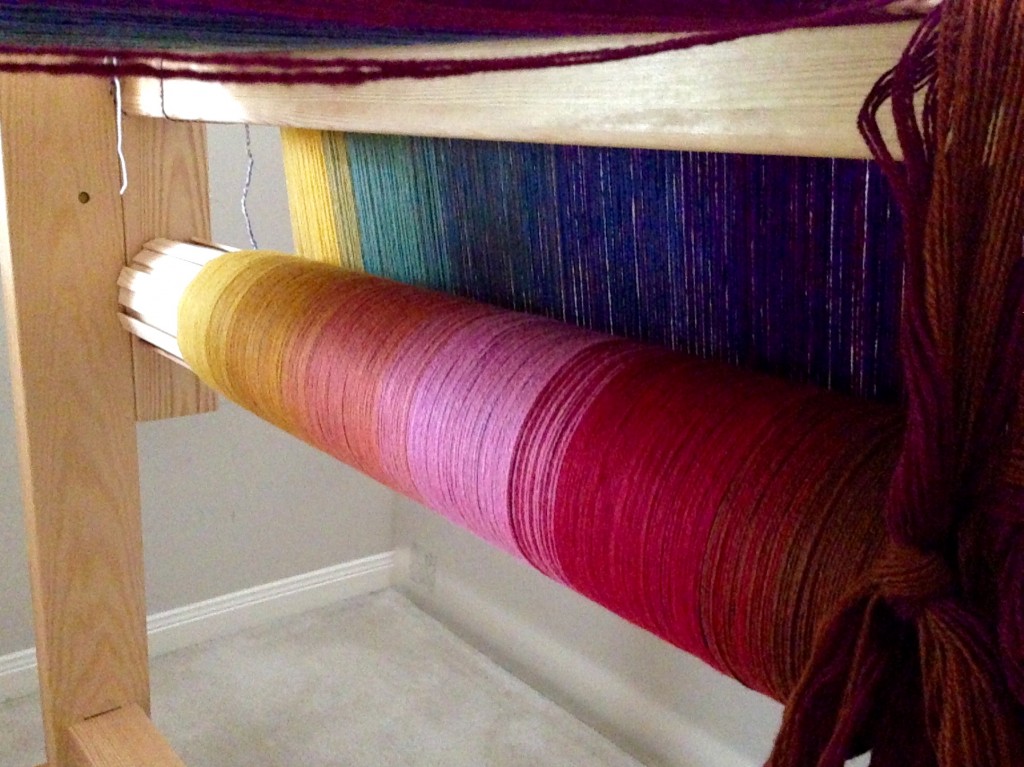
Doing the next thing with courage does make a difference. It is like that with prayer. When I face a new difficulty, I struggle to know what to pray. I feel like a beginner again. But I keep coming back to this comforting thought: God always listens to the heart as much as to the words. God does not look for a “leader” who prays, he looks for an ordinary person who has faith to hear and obey. This is the person whose prayers reach God’s ears.
May you have courage for the next thing.
Learning,
Karen

